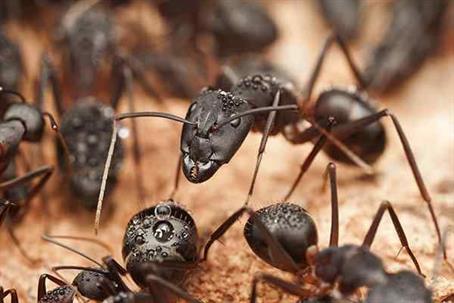How Do I Tell If My Houston Home Is At Risk for Carpenter Ants?
The answer to this is simple. Take a moment. Walk out into your yard, and turn around to face your home. As you stand there, ask yourself this question: "Does my home have any wood on it?" If your answer to this question is yes, then your Houston home is at risk for carpenter ants. Of course, that is the simple answer, and it does not take into account all of the many factors that can make one home more interesting or vulnerable to these insects than another. Let's dig in a little deeper.
Do you have stumps or logs in your yard?
If you do, your home could be at more risk of a carpenter ant infestation. Every spring, carpenter ant colonies send out male and female alates (flying ants) to establish new nests. If a mature colony develops in a stump or a log on your property, spring alates that emerge in your yard are likely to target your home because they don't travel far and they don't swarm together for more than 30 minutes.
Do you have woodpiles, brush piles, leaf piles, or other organic debris in your yard? If you do, these will be attractive to carpenter ants and are likely to have carpenter ant activity. The closer these are to your home, the higher your risk of a carpenter ant infestation.
Do you have moist ground around your home?
Carpenter ants are drawn to moist areas. They know that in these locations they are likely to find rotting wood suitable for habitation. Carpenter ants won't create galleries in sound wood and they require a moisture content of more than 15 percent. So wet, rotting wood is highly attractive to these ants. If you have broken spots in your gutter system or points where obstructions have formed, it can lead to an oversaturation of your foundation perimeter.
Do you have old wood on your home?
An old deck you built yourself or a fence that has seen better days are prime examples of wood sources that can lure carpenter ants into a yard and up close to a home, even structures that are built with pressure-treated wood. Carpenter ants don't prefer to use pressure-treated lumber as a location to establish a nest because it has a chemical preservative forced into the pores of the wood. This chemical helps the wood resist the decay that carpenter ants are attracted to. But even pressure-treated wood can decay over time when it is exposed to moist soil. Manufacturers claim that pressure-treated wood is resistant to carpenter ants but they do not make the claim that they are carpenter ant-proof. There is a big difference. An example of this is wearing a water-resistant watch when you go diving. When you return to the surface, you're probably going to need a new watch.
Do you have a residential pest control plan?
The best way to prevent wood-destroying organisms from chewing away at your property is to have routine visits from a licensed and knowledgeable pest control professional. These service visits come with a detailed inspection, appropriate treatments for every season, and feedback about pest pressures on your property. If you don't have this essential protection for your Greater Houston home, you are at risk for carpenter ants. There is no getting around it. Carpenter ants can be a problem in our service area, especially when they find moist conditions and wet, rotting wood to tunnel into.
The greater threat in our area, however, are subterranean termites. Conditions that attract carpenter ants also attract these tiny wood-eating pests. And if you're not aware of it, Houston is home to some of the most destructive termites in the United States. Fortunately, your Houston home can be protected from both of these pest threats.
Get your home ready for the summer ant invasion with a little help from Modern Pest Control. We offer residential pest control plans that include protection from carpenter ants and subterranean termites. Get started by requesting a free pest inspection. We'll help you find the program that works best for your specific needs and budget.

